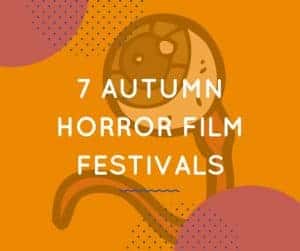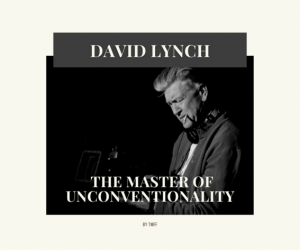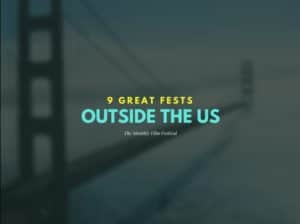We’ve been talking quite a lot about horror films lately, so the important thing to mention before we move on to the matters at hand is that we’re not narrowing down the scope of our festival to the horror genre. Far from it – we’re merely exploiting the potential of the most autumnal month of the year, one that’s going to end in a few short days. Everything shall then culminate with worldwide Halloween celebrations, before the clocks strike midnight and the amazing ‘I haven’t seen you since last month’ jokes become feasible for the 10th time this year. Good times are upon us! Unless you hate Halloween parties, like me. Then you’re more likely to stay at home and fend off the swarms of zombies and werewolves seeking free candy watch some films. Or dissect them, categorise them and draw a conclusion over their originality, or lack of. Just like me today. Here goes.
The search for brains, with a twist
It never occurred to me how thin of a line there is between the reality that we’re accustomed with and all those instances where a catastrophe on global proportions has sometimes occurred (nobody really knows details about this, suspiciously enough) and people start turning into zombies. The common ground linking these two instances, is, of course, the search for brains. Universities, corporations and small firms alike all look for bright and creative people, and hire them thanks to their cerebral prowess. Zombies also seek their brains, but for slightly more physical purposes.
And if we have to talk about films which fall in the genre, I think I don’t even need to make the effort to name the most famous titles. I’ll stick to bashing the usually low degrees of originality: the most common factor of differentiation is the speed with which the zombies seem to move: extremely slow, very slow, slow or fast as f**k. Whether it’s an evil pharma corporation that messed up at some point in their R&D or supply chain, a result of mankind’s warmongering tendencies or you the mere fact that you have to take the onset of living dead at face value, films of this type usually score low on originality but high on entertainment value and dramatic potential. Naturally, as long as you don’t mind zombie chases in a proportion of at least three quarters of the film’s total action.
Something’s seriously wrong in this house, let’s investigate!
Ah, the typical setting of 76% of the majority of all horror films with kids set in a suburban American neighbourhood. Everyday stuff happens for half an hour, family members engage in their usual routine, until something strange occurs. This is usually minimalised and scientifically labeled as ‘random weird bulls**t’, until it happens again, and again, and again. Then, as if from an innate curiosity coupled with sadism, the people usually install cameras, call the police or go to the attic and find out something messed up about the house’s history or previous owners. They don’t just pack and leave, because we’d have no film that way, would we?
Usually oozing with jump scares and tense moments where nothing happens, followed by sudden escalations of dynamism, horror titles that follow this well-established formula usually don’t fall too far away from the tree. With its roots in A Nightmare on Elm Street and reinvented by the first Paranormal Activity, the first few titles were rather fresh and enjoyable. Shockingly enough, the following 564843 titles didn’t improve much.
The ‘dumb teenagers get killed one by one’ trope
Because what better idea is there than splitting up when lost in a forest at night, or investigating the abandoned cabin in the middle of nowhere that used to belong to the uncle of a cousin’s friend’s mother-in-law of one of the protagonists? The werewolf/yeti/ghost/demon/witch/vampire that inhabits those premises gets mighty pissed off by the intruders, and decides to kill them off one by one. And so on, and so forth.
The only thing which can still surprise me in films such as this is the order in which characters die. And here’s where most of the fun resides: you can watch these with friends, and place bets on who will die first and who will make it (almost) until the very end. Unless it’s a parody (yes, The Cabin in the Woods, I’m looking at you, you beauty), the film is usually bad, but so bad that it’s good. And bad stuff that’s good (whilst keeping the badness in decent proportions and not exaggerating, of course) is better than good stuff that’s bad, isn’t it?
The actually unnerving horror film which ‘horror fans’ won’t like
And last, but not least, we’ve got quite a genre niche on our hands: horror films that are actually smart. These don’t abuse with their use of jump scares and accompanying sudden loud noises, but actually try to achieve the unnerving atmosphere in a smart way. More slow-paced, psychological and humane, such films are usually overlooked by so-called horror fans, because they tend to get bored when nothing jumps out of the closet for 5 minutes straight. Personally, I absolutely love these! The Shining, the first SAW and the recent and superb The Witch are all such examples of refined style and good taste. I’d wish for more, but then they would become a trend, and once something becomes a trend, it usually comes out diluted and shallow. So, the fewer, the better.
















